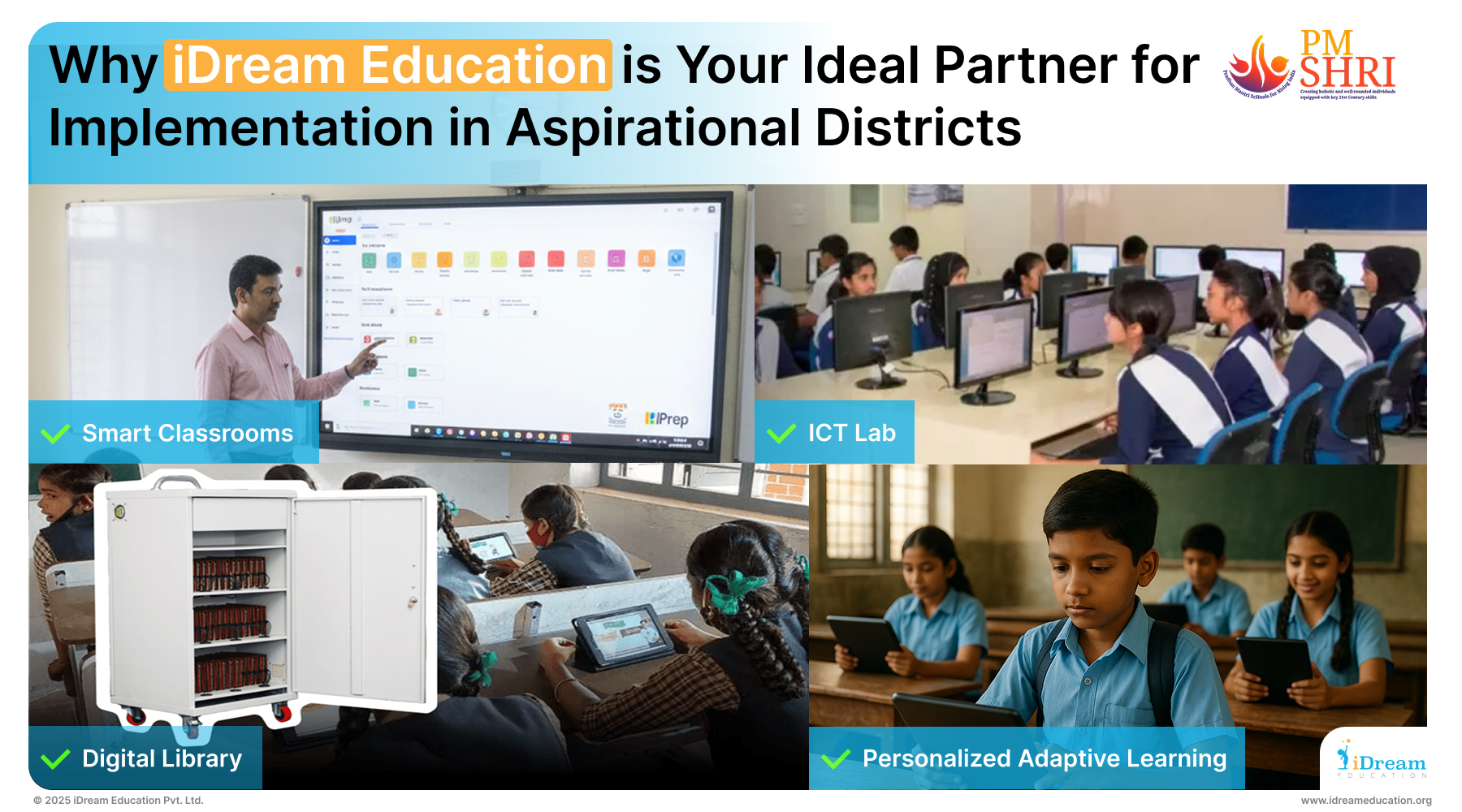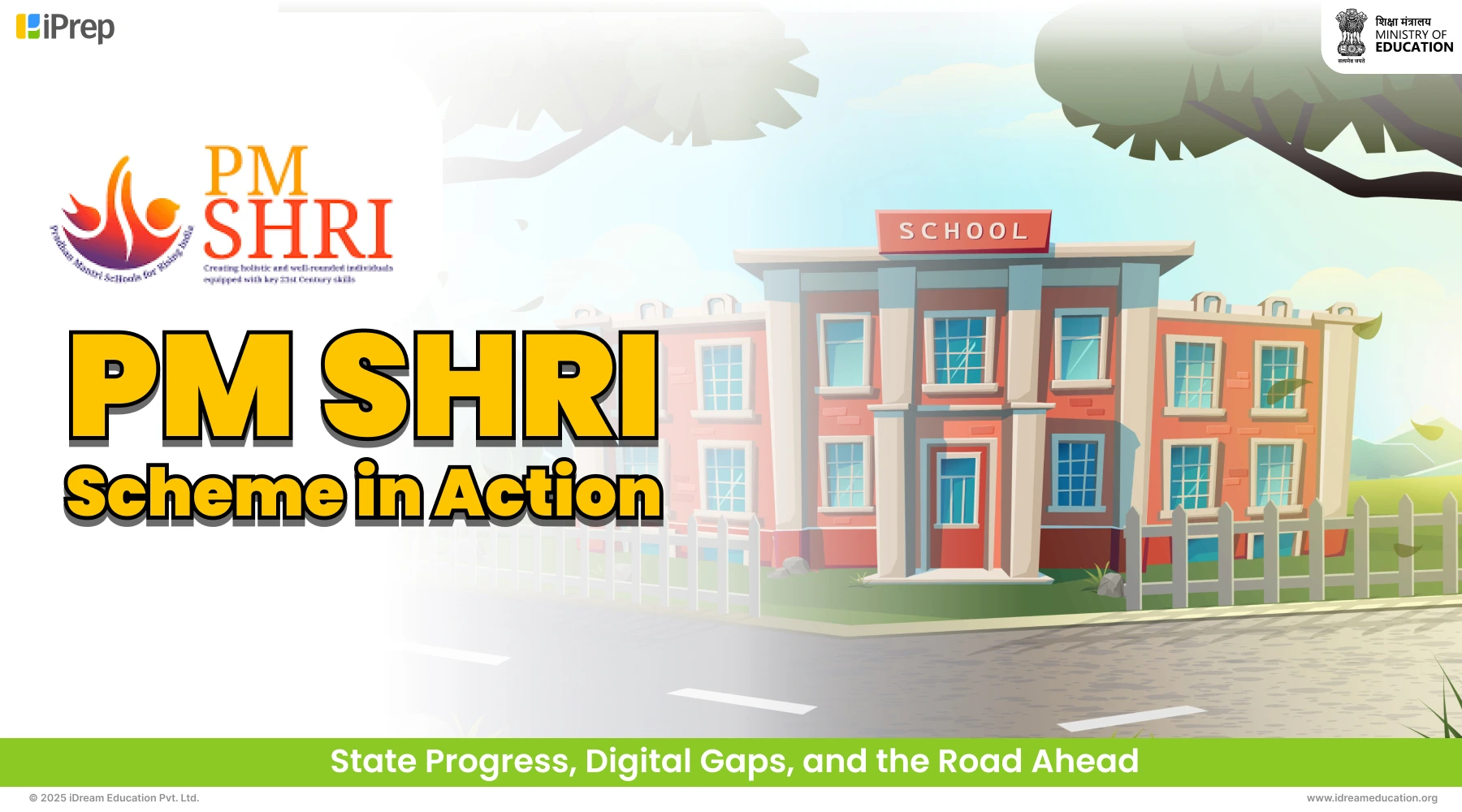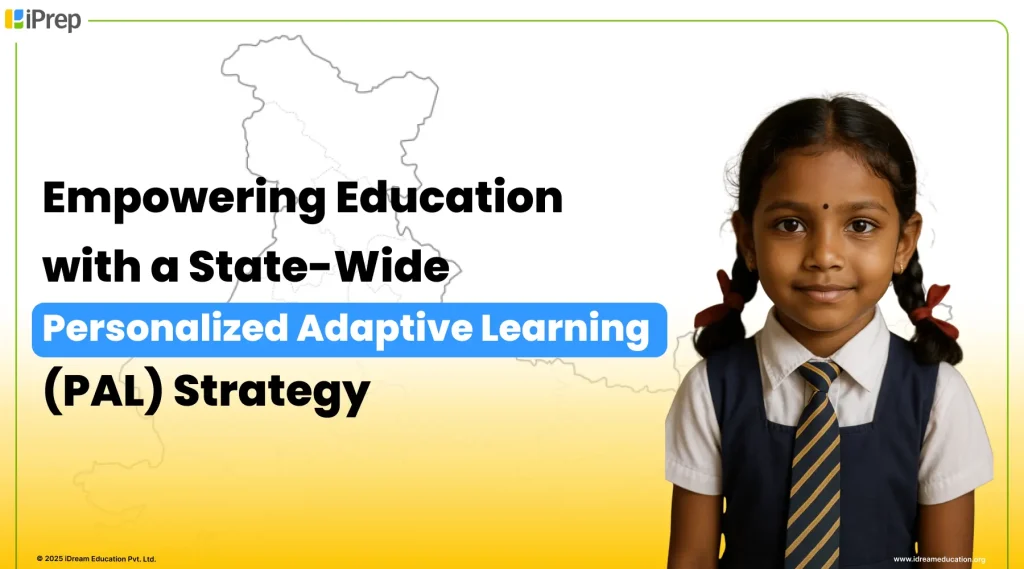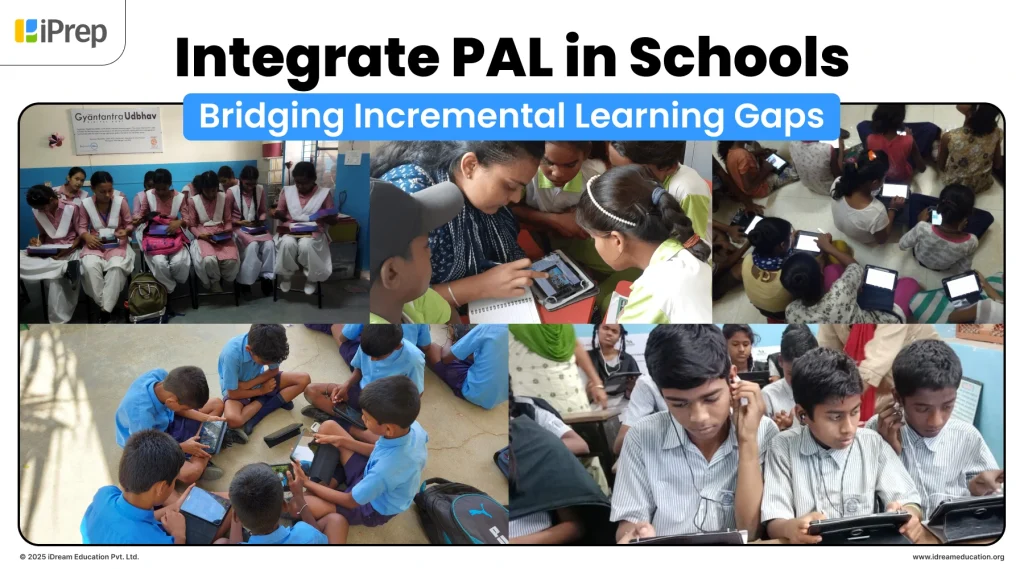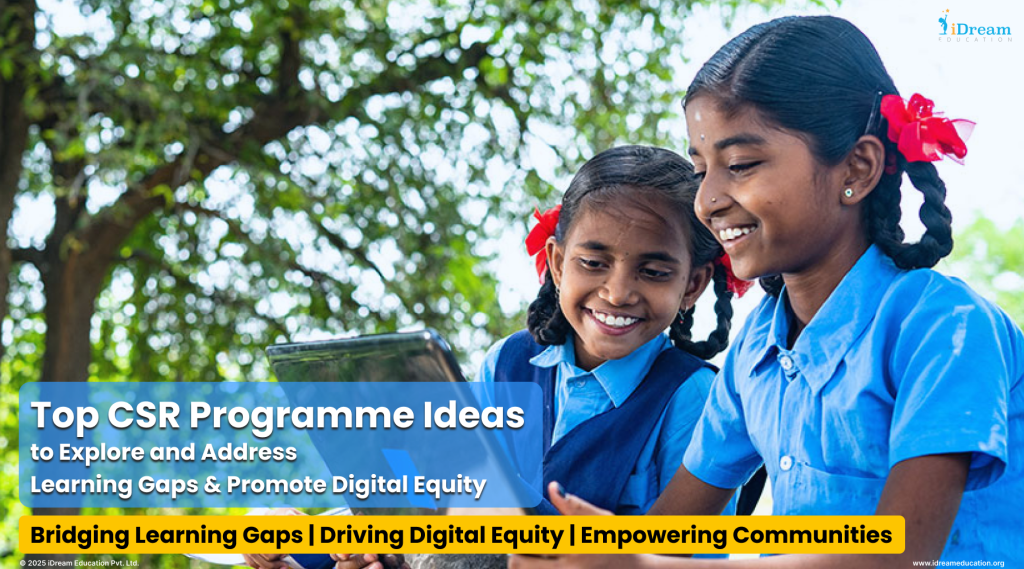
The PM SHRI scheme is one of India’s most ambitious education missions, set to transform more than 14,500 schools into model learning institutions. Technology interventions such as smart classrooms, digital libraries, and teacher resource packages are central to this vision.
However, even after installing digital boards and distributing tablets, most classrooms fail to see a real impact on learning outcomes. Why? Because hardware alone cannot drive change. Teachers need support, students need engaging content, and administrators need measurable data. That’s where you need a vendor who aligns with the PM SHRI school transformation framework and ensures real adoption, usage, and impact of technology in implementation under the PM SHRI scheme.
To seamlessly integrate PM SHRI, aligned technology in schools, you need a vendor checklist. This helps schools and project administrators choose partners who can deliver more than just devices. You need a vendor who brings lasting educational value.
The Role of Vendor Selection in Driving Impactful PM Shri School Transformation
In recent years, technology procurement in schools has often become a hardware-first exercise. Smart classes, tablets, and devices are distributed under the banner of digital education, but the real essence of digital enablement is overlooked. Too often, it is assumed that teachers will search for suitable content online and students will naturally use devices for learning.
The ground reality, however, is different.
Teachers already struggle to fit lesson planning, assessments, and student engagement into a 40-minute classroom. Expecting them to also find, align, and integrate digital content into their lessons is impractical. Similarly, giving students unprotected access to the internet exposes them to irrelevant, biased, or even unsafe content. This not only risks misuse, such as social media distractions, but also dilutes the very purpose of introducing digital tools in the classroom.
As a result, we see a familiar pattern like smart class equipment gathering dust, devices underutilized, and teachers resorting to whatever content they can find online. The outcome is inconsistent, unstructured, and far from the transformative potential of digital education.
Let’s Look at Common Mistakes Schools Make While Choosing Vendors
A lot of well-intentioned school transformation projects fail because of recurring mistakes in vendor selection. Despite significant investments, the impact on student learning often falls short. Some of the most common pitfalls include:
- Over-reliance on hardware: Schools often assume that smartboards or tablets alone will drive digital learning. Without meaningful, curriculum-aligned digital content, these devices quickly fall into disuse.
- One-time technical training: Teachers may be trained on how to “switch on” devices or use basic features, but not on how to effectively integrate digital tools into their daily lesson plans. As a result, adoption remains shallow and inconsistent.
- Lack of reporting: Without analytics on usage, administrators cannot track progress, identify challenges, or make evidence-based decisions on the implemented solution. This lack of accountability weakens long-term impact.
- Superficial “AI-powered” promises: Many vendors market devices with flashy claims of being “AI-driven,” but these features often add little practical value in real classrooms. Instead, they confuse or overwhelm teachers, leading to poor adoption and misalignment with the curriculum.
Each of these mistakes underscores why schools need a strong vendor selection checklist. By carefully evaluating vendors on their ability to provide content, training, monitoring, and real classroom support, you can prevent investments from turning into under-utilised infrastructure.
For initiatives like PM SHRI to truly succeed, vendor selection cannot be reduced to a tick-box process of hardware procurement. Schools must partner with vendors who bring:
- Complete digital learning solutions, not just devices
- Curriculum-aligned content that saves teachers’ time and ensures relevance
- Offline-first access, so learning isn’t dependent on internet availability
- Safe and secure platforms that protect students from unnecessary or harmful content.
- Accountability through reporting and measurable outcomes, ensuring that investments translate into real learning impact
Key Components You Should Look for in a PM SHRI Vendor Checklist: Choosing the Right Partner for School Transformation
Hardware and Service Readiness
- Durable devices built for classrooms with proper warranties and support for long-term use.
- Clear and transparent proposals that include every component upfront, avoiding hidden costs or unexpected add-ons.
- Strong service and maintenance agreements to ensure timely repairs, updates, and uninterrupted learning.
Learning Management System
- The PM SHRI vendor checklist specifies that the vendor should provide a learning management system pre-installed on all devices, whether in smart classrooms, ICT labs, libraries, or tablets. The LMS, whether adaptive or non-adaptive, must also be accessible in Hindi, English, and local languages to make learning inclusive and effective for every student.
- It should be designed on universal design principles to make navigation intuitive and easy, requiring minimal training for teachers and students, just like using everyday mobile apps. This ensures equitable access, smooth adoption, and maximum usage of digital resources.
- The LMS should also be capable of integrating across multiple hardware and operating systems, such as Windows, Linux, Tizen, and Android, with seamless accessibility both online and offline.
Curriculum-aligned Digital Content
- One of the most critical components to consider in a PM SHRI vendor checklist is the availability of NCERT and State Board-aligned digital content that is regularly updated as per curriculum goals. This ensures strong adoption of technology in PM SHRI schools by offering a wide variety of resources that mirror textbooks, making it easier for teachers and students to seamlessly integrate the content into classroom teaching and learning
- The content should be accessible offline and should also be available in Hindi, English, and local languages, supporting diverse learning styles and aligning with the National Education Policy (NEP 2020)’s focus on multilingual education.
Reporting Dashboards for Usage Tracking and Monitoring
- Most schools and CSR-supported initiatives lack transparent mechanisms to track whether digital content and devices are being actively used. Administrators often depend on scattered reports, making it difficult to measure real impact or identify areas of concern.
- A strong digital library vendor offers reporting dashboards that provide real-time insights into content usage, teacher interaction, and student engagement, with key features that align well with an impactful CSR programme idea in education. This data-driven evidence helps administrators and CSR bodies make informed decisions, ensuring accountability and measurable learning outcomes.
Experiential Teacher Training
- Teachers often feel burdened or underprepared when new digital tools are introduced. Without proper training, technology becomes an unused resource, disconnected from classroom pedagogy.
- Effective vendors conduct hands-on, pedagogy-focused training that goes beyond technical setup. For example, teachers are shown how to use videos to simplify science concepts or integrate quizzes to reinforce learning. This transforms digital tools into practical aids that truly enhance teaching.
Continuous Academic and Technical Support
- In many projects, vendors complete installation and disappear, leaving schools without support. As soon as devices face issues or content requires updates, both teachers and students lose trust in the system.
- Reliable partners provide continuous academic and technical support, including 24/7 assistance and ground-level teams to address concerns. This ensures uninterrupted learning and builds teacher confidence to fully adopt digital resources.
All these challenges highlight one truth: technology alone cannot drive change, it needs the right partner for sustained success.
Your Trusted Partner for End-to-End PM SHRI Implementation
With over 9 years of experience working closely with schools across India, we understand that every classroom has unique needs. From setting up digital libraries, digital libraries with PAL, smart classes, to delivering teacher training, usage reporting, analytics, and ongoing support, we have enabled schools to truly embrace digital learning.
Our solutions are designed in alignment with government policies on school transformation and digitalisation, ensuring that implementation is not just smooth but also sustainable.
This makes us a trusted partner for complete PM SHRI implementation and support, empowering schools to achieve their vision of holistic, future-ready education.
To know from us, you may contact us at +917678265039 or write to us at share@idreameducation.org. You can also share your details here, and our team will connect with you.




